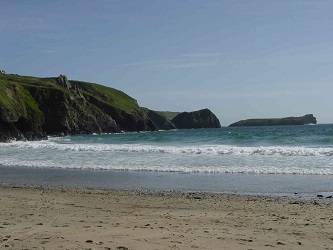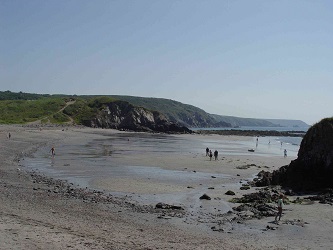Current ISIS code: M211
Previous assemblage name: W521 sandy beaches.
Linked assemblage: n/a
Description of habitat typically supporting the assemblage: M1 assemblages contain highly specialised species that are adapted to an extreme environment. They share very few species with other assemblage types. Sampling difficulties and the small number of species make M1 assemblages very difficult to evaluate or monitor. Fortunately, they are not currently under any obvious threat.

This assemblage type is characterised mainly by terrestrial beetles. The assemblage type is found on sandy shores subject to tidal disturbance, but only Actocharis readingii appears to be truly intertidal. Many species are mainly found in areas only affected by spring tides. Several species such as Omalium rugulipenne and Teropalpus unicolor are restricted to wrack beds at the upper margins of the strand line. Other species such as Anotylus maritimus occur in association with other types of detritus such as carrion and dung. Some species such as Nebria complanata and Cicindela maritima also occur well into the supra-littoral zone, which could also serve as a refuge for other species during storm surges. The tiny predatory two-winged flies Chersodromia speculifera and Crossopalpus setigera are found on exposed sand at the top of the shore.
This SAT is vulnerable to recreational activity and associated management of the supra-littoral zone. It is also vulnerable to climate change induced coastal erosion and the associated development of sea defences. The apparent north-south cline in scores may necessitate the introduction of regional variations to default targets.

Potentially important environmental impacts
- Trampling of breeding habitat e.g. as a result of recreational use of beaches by visitors.
- Removal of wrack beds and other detritus-related habitat, either as a nuisance or from larger scale brown seaweed collecting.
- Increased coastal erosion associated with climate change.
Sampling & assessing the assemblage
Standard sampling protocols apply.
Target groups: Beetles.
Fieldwork methods: Ground-searching.
Alternative methods: n/a
Season: Spring-Summer.
The ground searching should include sieving of tidal debris. This is a low tide sampling regime between mid-April and August. Net use may be essential to apprehend wrack diptera, in addition to sandy beach hybotid flies.
Discrimination of conservation quality: Good.
Default target: 7 species from the assemblage, though northern beaches may be disadvantaged by this score.
